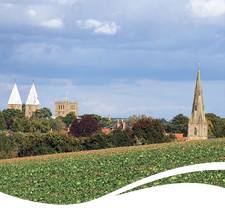Cumbria Wildlife Trust and partners have created four entertaining and engaging Creature Comforts-style animations to highlight how NFM can help protect Cumbria’s homes, businesses and farms.
Funded by the Environment Agency the short films demonstrate how these techniques decrease flooding downstream, reduce the impact of drought on land, and reduce pollutants in water.
NFM is a catch-all term for a variety of landscaping techniques used to hold water back during flood events, which reduce the impact downstream on buildings and infrastructure such as bridges.
The techniques include restoring peatland, so it soaks up water instead of it draining into rivers; re-meandering rivers to slow down the fast flow of water, which is more likely in straightened rivers; and protecting flood plains from development.
The four animated films provide a unique opportunity to recreate the varied Cumbrian landscapes and meet several lovable characters who explain the different NFM techniques, bringing the topic to life.
The animations were produced in partnership with the Environment Agency who provided funding, while StudioDOK provided the film making expertise.
The four characters are narrated by ‘local voices’, including David Kennedy and Michael Farrell from the Environment Agency, John Gorst from United Utilities and Abigail Kennedy, a Cumbrian art and photography teacher.
- Pete the frog, talks to us about restoring peatlands and the benefits this has. Pete explains that healthy peatland holds back water during flood events, cleans drinking water, and stores carbon that would otherwise be released, as well as providing valuable habitat for wildlife.
- Russell the Border Collie dog explains how holding back water temporarily on farmland can slow the flow of water through communities downstream to reduce flooding and reduce damage to farm infrastructure. Using techniques to make grassland permeable, so it holds on to more water, can increase grass growth making it more resilient to drought caused by climate change.
- Brook the otter talks about how floodplains can play an important part in managing flooding by storing water for a short while to take pressure of communities, but that this requires careful consideration as it is highly valuable farm land. NFM can work with farming and can help limit the damage done by flooding to farms. Parts of many floodplains have been lost to housing developments because of how flat it is.
- Fin the fish, gives the case for natural rivers. Fin explains that rivers have been straightened, giving less space for water and speeding up flow. This increases the likelihood of flooding downstream, affecting homes, businesses and bridges. Wiggly rivers are more likely to hold back debris like mud, rocks and tree branches, and stop the debris getting stuck under bridges downstream.


